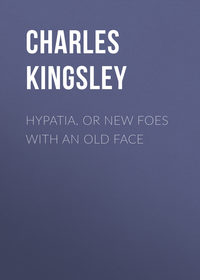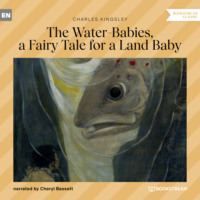 полная версия
полная версияAt Last: A Christmas in the West Indies
The way was beguiled, if I recollect rightly, for some miles on, by stories about Cuba and Cuban slavery from one of our party. He described the political morality of Cuba as utterly dissolute; told stories of great sums of money voted for roads which are not made to this day, while the money had found its way into the pockets of Government officials; and, on the whole, said enough to explain the determination of the Cubans to shake off Spanish misrule, and try what they could do for themselves on this earth. He described Cuban slavery as, on the whole, mild; corporal punishment being restricted by law to a few blows, and very seldom employed: but the mildness seemed dictated rather by self-interest than by humanity. ‘Ill-use our slaves?’ said a Cuban to him. ‘We cannot afford it. You take good care of your four-legged mules: we of our two-legged ones.’ The children, it seems, are taken away from the mothers, not merely because the mothers are needed for work, but because they neglect their offspring so much that the children have more chance of living—and therefore of paying—if brought up by hand. So each estate has, or had, its crêche, as the French would call it—a great nursery, in which the little black things are reared, kindly enough, by the elder ladies of the estate. To one old lady, who wearied herself all day long in washing, doctoring, and cramming the babies, my friend expressed pity for all the trouble she took about her human brood. ‘Oh dear no,’ answered she; ‘they are a great deal easier to rear than chickens.’ The system, however, is nearly at an end. Already the Cuban Revolution has produced measures of half-emancipation; and in seven years’ time probably there will not be a slave in Cuba.
We waded stream after stream under the bamboo clumps, and in one of them we saw swimming a green rigoise, or whip-snake, which must have been nearly ten feet long. It swam with its head and the first two feet of its body curved aloft like a swan, while the rest of the body lay along the surface of the water in many curves—a most graceful object as it glided away into dark shadow along an oily pool. At last we reached an outlying camp, belonging to one of our party who was superintending the making of new roads in that quarter, and there rested our weary limbs, some in hammock, some on the tables, some, again, on the clay floor. Here I saw, as I saw every ten minutes, something new—that quaint vegetable plaything described by Humboldt and others; namely, the spathe of the Timit palm. It encloses, as in most palms, a branched spadix covered with innumerable round buds, most like a head of millet, two feet and a half long: but the spathe, instead of splitting and forming a hood over the flowers, as in the Cocorite and most palms, remains entire, and slips off like the finger of a glove. When slipped off, it is found to be made of two transverse layers of fibre—a bit of veritable natural lace, similar to, though far less delicate than, the famous lace-bark of the Lagetta-tree, peculiar, I believe, to one district in the Jamaica mountains. And as it is elastic and easily stretched, what hinders the brown child from pulling it out till it makes an admirable fool’s cap, some two feet high, and exactly the colour of his own skin, and dancing about therein, the fat oily little Cupidon, without a particle of clothing beside? And what wonder if we grown-up whites made fools’ caps too, for children on the other side of the Atlantic? During which process we found—what all said they had never seen before—that one of the spadices carried two caps, one inside the other, and one exactly like the other; a wanton superfluity of Nature, which I should like to hear explained by some morphologist.
We rode away from that hospitable group of huts, whither we were to return in two or three days; and along the green trace once more. As we rode, M– the civiliser of Montserrat and I side by side, talking of Cuba, and staring at the Noranteas overhead, a dull sound was heard, as if the earth had opened; as indeed it had, engulfing in the mud the whole forehand of M–’s mule; and there he knelt, his beard outspread upon the clay, while the mule’s visage looked patiently out from under his left arm. However, it was soft falling there. The mule was hauled out by main force. As for cleaning either her or the rider, that was not thought of in a country where they were sure to be as dirty as ever in an hour; and so we rode on, after taking a note of the spot, and, as it happened, forgetting it again—one of us at least.
On again, along the green trace, which rose now to a ridge, with charming glimpses of wooded hills and glens to right and left; past comfortable squatters’ cottages, with cacao drying on sheets at the doors or under sheds; with hedges of dwarf Erythrina, dotted with red jumby beads, and here and there that pretty climbing vetch, the Overlook. 209 I forgot, by the by, to ask whether it is planted here, as in Jamaica, to keep off the evil eye, or ‘overlook’; whence its name. Nor can I guess what peculiarity about the plant can have first made the Negro fix on it as a fetish. The genesis of folly is as difficult to analyse as the genesis of most other things.
All this while the dull thunder of the surf was growing louder and louder; till, not as in England over a bare down, but through thickest foliage down to the high tide mark, we rode out upon the shore, and saw before us a right noble sight; a flat, sandy, surf beaten shore, along which stretched, in one grand curve, lost at last in the haze of spray, fourteen miles of Coco palms.
This was the Cocal; and it was worth coming all the way from England to see it alone. I at once felt the truth of my host’s saying, that if I went to the Cocal I should find myself transported suddenly from the West Indies to the East. Just such must be the shore of a Coral island in the Pacific.
These Cocos, be it understood, are probably not indigenous. They spread, it is said, from an East Indian vessel which was wrecked here. Be that as it may, they have thoroughly naturalised themselves. Every nut which falls and lies, throws out, during the wet season, its roots into the sand; and is ready to take the place of its parent when the old tree dies down.
About thirty to fifty feet is the average height of these Coco palms, which have all, without exception, a peculiarity which I have noticed to a less degree in another sand- and shore-growing tree, the Pinaster of the French Landes. They never spring-upright from the ground. The butt curves, indeed lies almost horizontal in some cases, for the lowest two or three yards; and the whole stem, up to the top, is inclined to lean; it matters not toward which quarter, for they lean as often toward the wind as from it, crossing each other very gracefully. I am not mechanician enough to say how this curve of the stem increases their security amid loose sands and furious winds. But that it does so I can hardly doubt, when I see a similar habit in the Pinaster. Another peculiarity was noteworthy: their innumerable roots, long, fleshy, about the thickness of a large string, piercing the sand in every direction, and running down to high-tide mark, apparently enjoying the salt water, and often piercing through bivalve shells, which remained strung upon the roots. Have they a fondness for carbonate of lime, as well as for salt?
The most remarkable, and to me unexpected, peculiarity of a Cocal is one which I am not aware whether any writer has mentioned; namely, the prevalence of that amber hue which we remarked in the very first specimens seen at St. Thomas’s. But this is, certainly, the mark which distinguishes the Coco palm, not merely from the cold dark green of the Palmiste, or the silvery gray of the Jagua, but from any other tree which I have ever seen.
When inside the Cocal, the air is full of this amber light. Gradually the eye analyses the cause of it, and finds it to be the resultant of many other hues, from bright vermilion to bright green. Above, the latticed light which breaks between and over the innumerable leaflets of the fruit fronds comes down in warmest green. It passes not over merely, but through, the semi-transparent straw and amber of the older leaves. It falls on yellow spadices and flowers, and rich brown spathes, and on great bunches of green nuts, to acquire from them more yellow yet; for each fruit-stalk and each flower-scale at the base of the nut is veined and tipped with bright orange. It pours down the stems, semi-gray on one side, then yellow, and then, on the opposite side, covered with a powdery lichen varying in colour from orange up to clear vermilion, and spreads itself over a floor of yellow sand and brown fallen nuts, and the only vegetation of which, in general, is a long crawling Echites, with pairs of large cream-white flowers. Thus the transparent shade is flooded with gold. One looks out through it at the chequer-work of blue sky, all the more intense from its contrast; or at a long whirl of white surf and gray spray; or, turning the eyes inland toward the lagoon, at dark masses of mangrove, above which rise, black and awful, the dying balatas, stag-headed, blasted, tottering to their fall; and all as through an atmosphere of Rhine wine, or from the inside of a topaz.
We rode along, mile after mile, wondering at many things. First, the innumerable dry fruits of Timit palm, which lay everywhere; mostly single, some double, a few treble, from coalition, I suppose, of the three carpels which every female palm flower ought to have, but of which it usually develops only one. They may have been brought down the lagoon from inland by floods; but the common belief is, that most of them come from the Orinoco itself, as do also the mighty logs which lie about the beach in every stage of wear and tear; and which, as fast as they are cut up and carried away, are replaced by fresh ones. Some of these trees may actually come from the mainland, and, drifting into this curving bay, be driven on shore by the incessant trade wind. But I suspect that many of them are the produce of the island itself; and more, that they have grown, some of them, on the very spot where they now lie. For there are, I think, evidences of subsidence going on along this coast. Inside the Cocal, two hundred yards to the westward, stretches inland a labyrinth of lagoons and mangrove swamps, impassable to most creatures save alligators and boa-constrictors. But amid this labyrinth grow everywhere mighty trees—balatas in plenty among them, in every stage of decay; dying, seemingly, by gradual submergence of their roots, and giving a ghastly and ragged appearance to the forest. At the mouth of the little river Nariva, a few miles down, is proof positive, unless I am much mistaken, of similar subsidence. For there I found trees of all sizes—roseau scrub among them—standing rooted below high-tide mark; and killed where they grew.
So we rode on, stopping now and then to pick up shells; chip-chips, 210 which are said to be excellent eating; a beautiful purple bivalve, 211 to which, in almost every case, a coralline 212 had attached itself, of a form quite new to me. A lash some eighteen inches long, single or forked; purplish as long as its coat of lime—holding the polypes—still remained, but when that was rubbed off a mere round strip of dark horn; and in both cases flexible and elastic, so that it can be coiled up and tied in knots; a very curious and graceful piece of Nature’s workmanship. Among them were curious flat cake-urchins, with oval holes punched in them, so brittle that, in spite of all our care, they resolved themselves into the loose sand of which they had been originally compact; and I could therefore verify neither their genus nor their species.
These were all, if I recollect, that we found that day. The next day we came on hundreds of a most beautiful bivalve, 213 their purple colour quite fresh, their long spines often quite uninjured. Some change of the sandy bottom had unearthed a whole warren of the lovely things; and mixed with chip-chips innumerable, and with a great bivalve 214 with a thin wing along the anterior line of the shell, they strewed the shore for a quarter of a mile and more.
We came at last to a little river, or rather tideway, leading from the lagoon to the sea, which goes by the name of Doubloon River. Some adventurous Spaniard, the story goes, contracted to make a cutting which would let off the lagoon water in time of flood for the sum of one doubloon—some three pound five; spent six times the money on it; and found his cutting, when once the sea had entered, enlarge into a roaring tideway, dangerous, often impassable, and eating away the Cocal rapidly toward the south; Mother Earth, in this case at least, having known her own business better than the Spaniard.
How we took off our saddles, sat down on the sand, hallooed, waited; how a black policeman—whose house was just being carried away by the sea—appeared at last with a canoe; how we and our baggage got over one by one in the hollow log without—by seeming miracle—being swept out to sea or upset: how some horses would swim, and others would not; how the Negroes held on by the horses till they all went head over ears under the surf; and how, at last, breathless with laughter and anxiety for our scanty wardrobes, we scrambled ashore one by one into prickly roseau, re-saddled our horses in an atmosphere of long thorns, and then cut our way and theirs out through scrub into the Cocal;—all this should not be written in these pages, but drawn for the benefit of Punch, by him who drew the egg-stealing frog—whose pencil I longed for again and again amid the delightful mishaps of those forest rambles, in all of which I never heard a single grumble, or saw temper lost for a moment. We should have been rather more serious, though, than we were, had we been aware that the river-god, or presiding Jumby, of the Doubloon was probably watching us the whole time, with the intention of eating any one whom he could catch, and only kept in wholesome awe by our noise and splashing.
At last, after the sun had gone down, and it was ill picking our way among logs and ground-creepers, we were aware of lights; and soon found ourselves again in civilisation, and that of no mean kind. A large and comfortable house, only just rebuilt after a fire, stood among the palm-trees, between the sea and the lagoon; and behind it the barns, sheds, and engine-houses of the coco-works; and inside it a hearty welcome from a most agreeable German gentleman and his German engineer. A lady’s hand—I am sorry to say the lady was not at home—was evident enough in the arrangements of the central room. Pretty things, a piano, and good books, especially Longfellow and Tennyson, told of cultivation and taste in that remotest wilderness. The material hospitality was what it always is in the West Indies; and we sat up long into the night around the open door, while the surf roared, and the palm trees sighed, and the fireflies twinkled, talking of dear old Germany, and German unity, and the possibility of many things which have since proved themselves unexpectedly most possible. I went to bed, and to somewhat intermittent sleep. First, my comrades, going to bed romping, like English schoolboys, and not in the least like the effeminate and luxurious Creoles who figure in the English imagination, broke a four-post bedstead down among them with hideous roar and ruin; and had to be picked up and called to order by their elders. Next, the wind, which ranged freely through the open roof, blew my bedclothes off. Then the dogs exploded outside, probably at some henroost-robbing opossum, and had a chevy through the cocos till they tree’d their game, and bayed it to their hearts’ content. Then something else exploded—and I do not deny it set me more aghast than I had been for many a day—exploded, I say, under the window, with a shriek of Hut-hut-tut-tut, hut-tut, such as I hope never to hear again. After which, dead silence; save of the surf to the east and the toads to the west. I fell asleep, wondering what animal could own so detestable a voice; and in half an hour was awoke again by another explosion; after which, happily, the thing, I suppose, went its wicked way, for I heard it no more.
I found out the next morning that the obnoxious bird was not an owl, but a large goat-sucker, a Nycteribius, I believe, who goes by the name of jumby-bird among the English Negroes: and no wonder; for most ghostly and horrible is his cry. But worse: he has but one eye, and a glance from that glaring eye, as from the basilisk of old, is certain death: and worse still, he can turn off its light as a policeman does his lantern, and become instantly invisible: opinions which, if verified by experiment, are not always found to be in accordance with facts. But that is no reason why they should not be believed.
In St. Vincent, for instance, the Negroes one evening rushed shrieking out of a boiling-house, ‘Oh! Massa Robert, we all killed. Dar one great jumby-bird come in a hole a-top a roof. Oh! Massa Robert, you no go in; you killed, we killed,’ etc. etc. Massa Robert went in, and could see no bird. ‘Ah, Massa Robert, him darky him eye, but him see you all da same. You killed, we killed,’ etc. Da capo.
Massa Robert was not killed: but lives still, to the great benefit of his fellow-creatures, Negroes especially. Nevertheless, the Negroes held to their opinion. He might, could, would, or should have been killed; and was not that clear proof that they were right?
After this, who can deny that the Negro is a man and a brother, possessing the same reasoning faculties, and exercising them in exactly the same way, as three out of four white persons?
But if the night was disturbed, pleasant was the waking next morning; pleasant the surprise at finding that the whistling and howling air-bath of the night had not given one a severe cold, or any cold at all; pleasant to slip on flannel shut and trousers—shoes and stockings were needless—and hurry down through a stampede of kicking, squealing mules, who were being watered ere their day’s work began, under the palms to the sea; pleasant to bathe in warm surf, into which the four-eyes squattered in shoals as one ran down, and the moment they saw one safe in the water, ran up with the next wave to lie staring at the sky; pleasant to sit and read one’s book upon a log, and listen to the soft rush of the breeze in the palm-leaves, and look at a sunrise of green and gold, pink and orange, and away over the great ocean, and to recollect, with a feeling of mingled nearness and loneliness, that there was nothing save that watery void between oneself and England, and all that England held; and then, when driven in to breakfast by the morning shower, to begin a new day of seeing, and seeing, and seeing, certain that one would learn more in it than in a whole week of book-reading at home.
We spent the next morning in inspecting the works. We watched the Negroes splitting the coconuts with a single blow of that all-useful cutlass, which they handle with surprising dexterity and force, throwing the thick husk on one side, the fruit on the other. We saw the husk carded out by machinery into its component fibres, for coco-rope matting, coir-rope, saddle-stuffing, brushes, and a dozen other uses; while the fruit was crushed down for the sake of its oil; and could but wish all success to an industry which would be most profitable, both to the projectors and to the island itself, were it not for the uncertainty, rather than the scarcity, of labour. Almost everything is done, of course, by piecework. The Negro has the price of his labour almost at his own command; and when, by working really hard and well for a while, he has earned a little money, he throws up his job and goes off, careless whether the whole works stand still or not. However, all prosperity to the coco-works of Messrs. Uhrich and Gerold; and may the day soon come when the English of Trinidad, like the Ceylonese and the Dutch of Java, shall count by millions the coco-palms which they have planted along their shores, and by thousands of pounds the profit which accrues from them.
After breakfast—call it luncheon rather—we started for the lagoon. We had set our hearts on seeing Manatis (‘sea cows’), which are still not uncommon on the east coast of this island, though they have been exterminated through the rest of the West Indies since the days of Père Labat. That good missionary speaks of them in his delightful journal as already rare in the year 1695; and now, as far as I am aware, none are to be found north of Trinidad and the Spanish Main, save a few round Cuba and Jamaica. We were anxious, too, to see, if not to get, a boa-constrictor of one kind or other. For there are two kinds in the island, which may be seen alive at the Zoological Gardens in the same cage. The true Boa, 215 which is here called Mahajuel, is striped as well as spotted with two patterns, one over the other. The Huillia, Anaconda, or Water-boa, 216 bears only a few large round spots. Both are fond of the water, the Huillia living almost entirely in it; both grow to a very large size; and both are dangerous, at least to children and small animals. That there were Huillias about the place, possibly within fifty yards of the house, there was no doubt. One of our party had seen with his own eyes one of seven-and-twenty feet long killed, with a whole kid inside it, only a few miles off. The brown policeman, crossing an arm of the Guanapo only a month or two before, had been frightened by meeting one in the ford, which his excited imagination magnified so much that its head was on the one bank while its tail was on the other—a measurement which must, I think, be divided at least by three. But in the very spot in which we stood, some four years since, happened what might have been a painful tragedy. Four young ladies, whose names were mentioned to me, preferred, not wisely, a bathe in the still lagoon to one in the surf outside; and as they disported themselves, one of them felt herself seized from behind. Fancying that one of her sisters was playing tricks, she called out to her to let her alone; and looking up, saw, to her astonishment, her three sisters sitting on the bank, and herself alone. She looked back, and shrieked for help: and only just in time; for the Huillia had her. The other three girls, to their honour, dashed in to her assistance. The brute had luckily got hold, not of her poor little body, but of her bathing-dress, and held on stupidly. The girls pulled; the bathing-dress, which was, luckily, of thin cotton, was torn off; the Huillia slid back again with it in his mouth into the dark labyrinth of the mangrove-roots; and the girl was saved. Two minutes’ delay, and his coils would have been round her; and all would have been over.
The sudden daring of these lazy and stupid animals is very great. Their brain seems to act like that of the alligator or the pike, paroxysmally, and by rare fits and starts, after lying for hours motionless as if asleep. But when excited, they will attempt great deeds. Dr. De Verteuil tells a story—and if he tells it, it must be believed—of some hunters who wounded a deer. The deer ran for the stream down a bank; but the hunters had no sooner heard it splash into the water than they heard it scream. They leapt down to the place, and found it in the coils of a Huillia, which they killed with the deer. And yet this snake, which had dared to seize a full-grown deer, could have had no hope of eating her; for it was only seven feet long.
We set out down a foul porter-coloured creek, which soon opened out into a river, reminding us, in spite of all differences, of certain alder and willow-fringed reaches of the Thames. But here the wood which hid the margin was altogether of mangrove; the common Rhizophoras, or black mangroves, being, of course, the most abundant. Over them, however, rose the statelier Avicennias, or white mangroves, to a height of fifty or sixty feet, and poured down from their upper branches whole streams of air-roots, which waved and creaked dolefully in the breeze overhead. But on the water was no breeze at all. The lagoon was still as glass; the sun was sickening; and we were glad to put up our umbrellas and look out from under them for Manatis and Boas. But the Manatis usually only come in at night, to put their heads out of water and browse on the lowest mangrove leaves; and the Boas hide themselves so cunningly, either altogether under water, or with only the head above, that we might have passed half a dozen without seeing them. The only chance, indeed, of coming across them, is when they are travelling from lagoon to lagoon, or basking on the mud at low tide.











